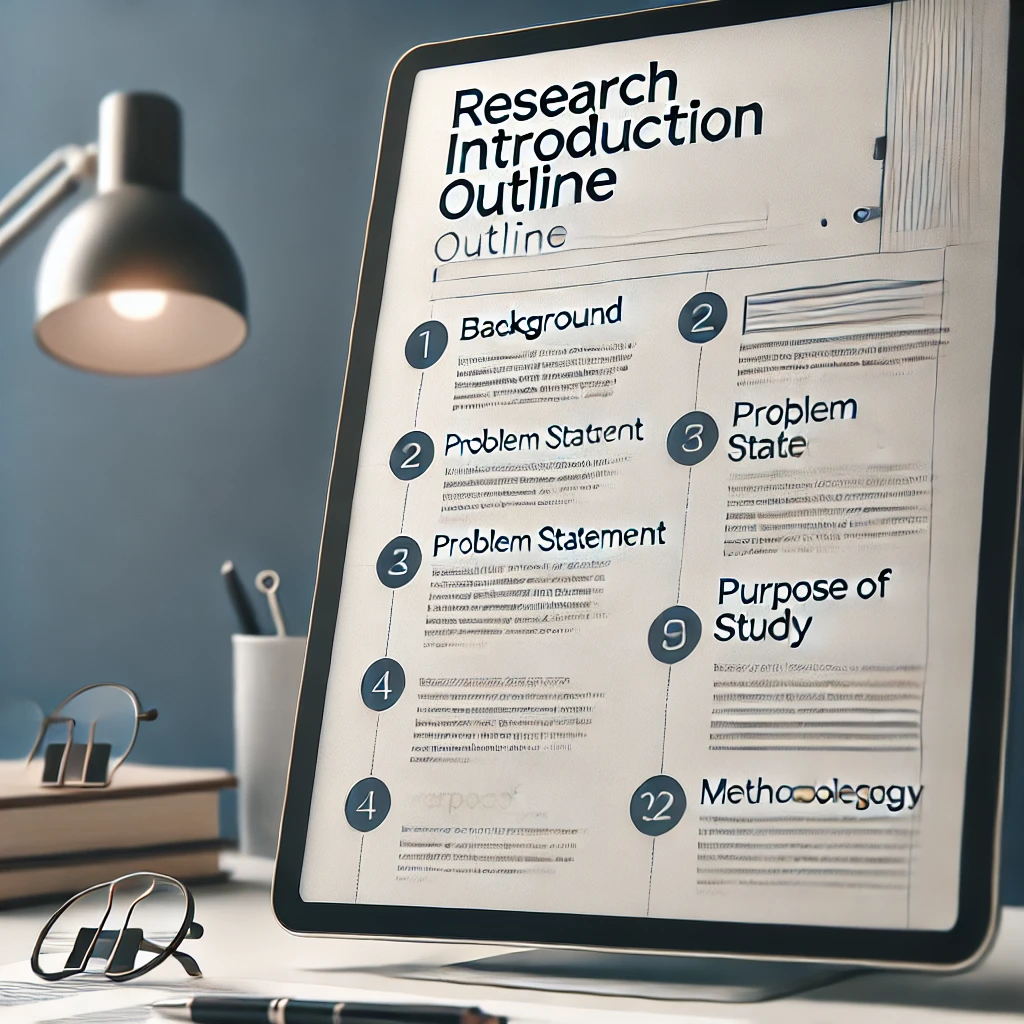Introduction
A research introduction outline serves as a critical component in the academic writing process, guiding researchers in structuring their thoughts and establishing a clear direction for their work. In this article, we will explore what constitutes an effective research introduction outline, including key components, examples, and practical tips for crafting compelling introductions. We will also highlight how MyWordAi.com, an automated academic writer powered by ChatGPT, can assist you in this endeavor.

What is a Research Introduction Outline?
A research introduction outline is a systematic approach to organizing the initial sections of a research paper. It provides a framework that outlines the key elements, ensuring that researchers present their work in a coherent manner. The primary components typically include:
- Background Information: Contextualizing the research topic.
- Research Problem: Clearly defining the issue or gap in knowledge.
- Purpose of the Study: Explaining the objectives and significance.
- Research Questions/Hypotheses: Outlining what the research seeks to address.
- Overview of Methodology: Briefly mentioning how the research will be conducted.
Structure of a Research Introduction
The structure of a research introduction is paramount to effectively communicate your ideas. Each section serves a purpose:
- Background Information: Start with general context to engage the reader. For instance, if your research focuses on climate change, provide statistics or recent studies that highlight its urgency.
- Research Problem: Clearly articulate the problem your research intends to solve. This section should succinctly present the gap in existing literature.
- Purpose of the Study: State what you aim to achieve. This could involve exploring a new hypothesis or conducting a comprehensive review of existing research.
- Research Questions/Hypotheses: This section outlines your specific questions or hypotheses that will guide your research.
- Overview of Methodology: Provide a brief description of the methods you will employ to conduct your study. This helps set the stage for detailed methodology in later sections.
Example of an Introduction Paragraph Outline for a Research Paper
An introduction paragraph is crucial for establishing the tone of the paper. A well-crafted introduction paragraph outline might include:
- Hook: Start with an intriguing statement or a startling fact to capture attention.
- Context: Provide background information relevant to your research topic.
- Thesis Statement: Clearly present your main argument or research question.
- Outline of Key Points: Briefly mention the structure of your paper to guide the reader.
Research Methodology Chapter 1 Example
In research, Chapter 1 often focuses on methodology. This section should include:
- Introduction to the Methodology: A brief overview of the methodology.
- Research Design: The overall approach you will take, such as qualitative or quantitative.
- Participants/Subjects: Details about the participants involved in your study.
- Data Collection Methods: Outline how you will collect data (e.g., surveys, interviews).
- Data Analysis: Describe how you will analyze the data collected.
How to Write an Introduction for an Outline
Writing an introduction for a research outline involves several steps:
- Identify the Research Topic: Clearly define what you will be researching.
- Establish the Importance: Explain why this research is significant and relevant.
- Formulate Research Questions: Develop the questions that will guide your study.
- Create a Draft: Write a rough draft of your introduction, focusing on clarity and coherence.
- Revise and Refine: Review your introduction for grammatical accuracy and logical flow.
Using MyWordAi for Writing Research Introductions
MyWordAi.com is an innovative tool designed to simplify the research writing process. With its ChatGPT-powered technology, researchers can easily create comprehensive outlines and introductions without the need to learn complex AI prompting techniques. Here’s how to use MyWordAi effectively:
- Visit MyWordAi.com: Access the website to start your writing journey.
- Choose Your Topic: Enter your research topic or keywords related to your study.
- Generate Outline: Utilize the tool to create a structured outline for your introduction.
- Draft Your Introduction: Let MyWordAi help you craft a compelling introduction based on your outline.
- Edit and Polish: Review the generated text for personalization and specific requirements.
By using MyWordAi, you can save time and enhance the quality of your academic writing, ensuring that your research introduction is engaging and well-structured.
Conclusion
In conclusion, a well-structured research introduction outline is essential for successful academic writing. It provides clarity and direction, allowing researchers to effectively communicate their ideas. By leveraging tools like MyWordAi, you can streamline your writing process and produce high-quality research introductions effortlessly.
Ready to enhance your academic writing experience? Try MyWordAi today and simplify your research writing journey. Download the app now from the Play Store.